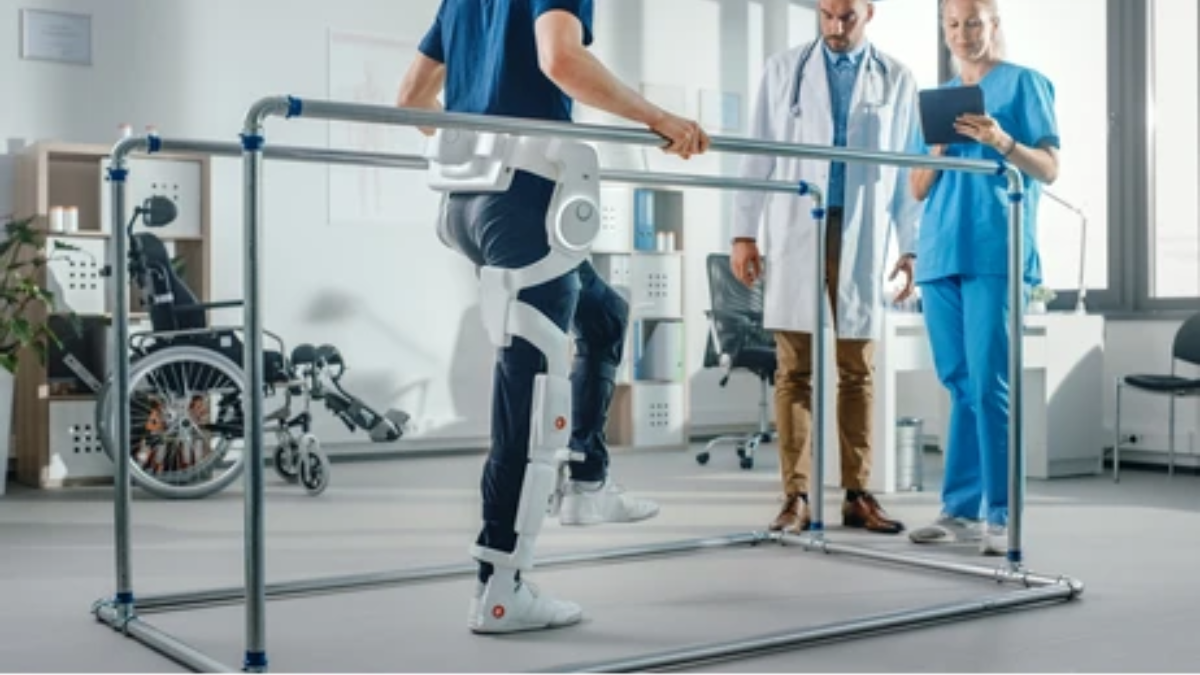Physiotherapy and rehabilitation services are essential for patients recovering from injuries, surgeries, chronic illnesses, or disabilities. Hospitals provide specialized care to restore mobility, strength, and function. These services aim to improve quality of life, reduce pain, and help patients regain independence. Modern hospitals integrate physiotherapy and rehabilitation into comprehensive patient care programs.
Importance of Physiotherapy in Hospitals
- Speeds Recovery: Helps patients regain mobility after surgery or injury.
- Pain Management: Reduces pain through therapeutic exercises and treatments.
- Prevents Complications: Avoids stiffness, muscle loss, and other post-illness complications.
- Supports Chronic Conditions: Improves mobility and function in arthritis, stroke, or heart disease patients.
- Enhances Quality of Life: Enables patients to return to daily activities safely.
Types of Hospital Physiotherapy Services
1. Orthopedic Physiotherapy
- Focuses on bone, joint, and muscle recovery.
- Assists post-surgery rehabilitation, fracture recovery, and sports injuries.
2. Neurological Rehabilitation
- Helps patients with stroke, spinal cord injuries, or nerve damage.
- Improves coordination, balance, and motor function.
3. Cardiopulmonary Physiotherapy
- Enhances heart and lung function after cardiac surgery or respiratory illness.
- Includes breathing exercises and endurance training.
4. Pediatric Physiotherapy
- Supports children with developmental delays, cerebral palsy, or congenital disorders.
5. Geriatric Rehabilitation
- Addresses age-related mobility issues, osteoporosis, and fall prevention.
6. Post-Operative Rehabilitation
- Focused on restoring strength, flexibility, and function after surgeries.
Role of Physiotherapists in Hospitals
- Assess patient condition and create individualized treatment plans.
- Conduct exercises, manual therapy, and use equipment for rehabilitation.
- Monitor progress and adjust therapy accordingly.
- Educate patients and families on exercises and home care.
- Collaborate with doctors, nurses, and occupational therapists for comprehensive care.
Equipment and Techniques in Hospital Physiotherapy
- Exercise machines and resistance bands for strength training.
- Treadmills and balance boards for mobility and coordination.
- Electrical stimulation, ultrasound, and heat therapy for pain relief.
- Hydrotherapy pools for low-impact rehabilitation exercises.
- Assistive devices like walkers, crutches, and braces.
Challenges in Hospital Physiotherapy
- Limited staff for high patient volumes.
- Patient non-compliance with therapy exercises.
- Post-surgical complications affecting recovery.
- Funding and availability of advanced equipment in some hospitals.
- Coordination with multidisciplinary teams.
Future of Hospital Rehabilitation Services
- Robotic-Assisted Therapy: Helps patients regain movement efficiently.
- Virtual Reality Rehabilitation: Improves engagement and motor skills.
- Tele-Physiotherapy: Remote guidance for home exercises.
- AI-Powered Assessment: Tracks progress and recommends personalized exercises.
- Integrated Multidisciplinary Programs: Combining physiotherapy with occupational therapy, speech therapy, and psychological support.
FAQs on Hospital Physiotherapy and Rehabilitation Services
1. Why are physiotherapy services important in hospitals?
They aid recovery, reduce pain, prevent complications, and improve quality of life.
2. Who provides physiotherapy in hospitals?
Qualified physiotherapists work alongside doctors, nurses, and rehabilitation teams.
3. What conditions require hospital physiotherapy?
Orthopedic injuries, neurological disorders, cardiac and pulmonary conditions, post-surgical recovery, pediatric and geriatric issues.
4. What techniques are used in physiotherapy?
Exercise therapy, manual therapy, electrical stimulation, hydrotherapy, and use of assistive devices.
5. Can physiotherapy prevent complications after surgery?
Yes, it helps prevent stiffness, muscle atrophy, and mobility issues.
6. How is progress monitored in physiotherapy?
Through regular assessments, tracking mobility, strength, and functional improvements.
7. What is the role of rehabilitation in chronic illnesses?
It maintains mobility, reduces pain, and supports independence in daily activities.
8. Can physiotherapy be done at home?
Yes, with guidance from hospital physiotherapists through home programs or tele-physiotherapy.
9. What is robotic-assisted physiotherapy?
Use of robotic devices to assist patients in performing precise rehabilitation exercises.
10. What is the future of hospital rehabilitation services?
Tele-physiotherapy, VR rehabilitation, AI assessment, robotic-assisted therapy, and integrated

